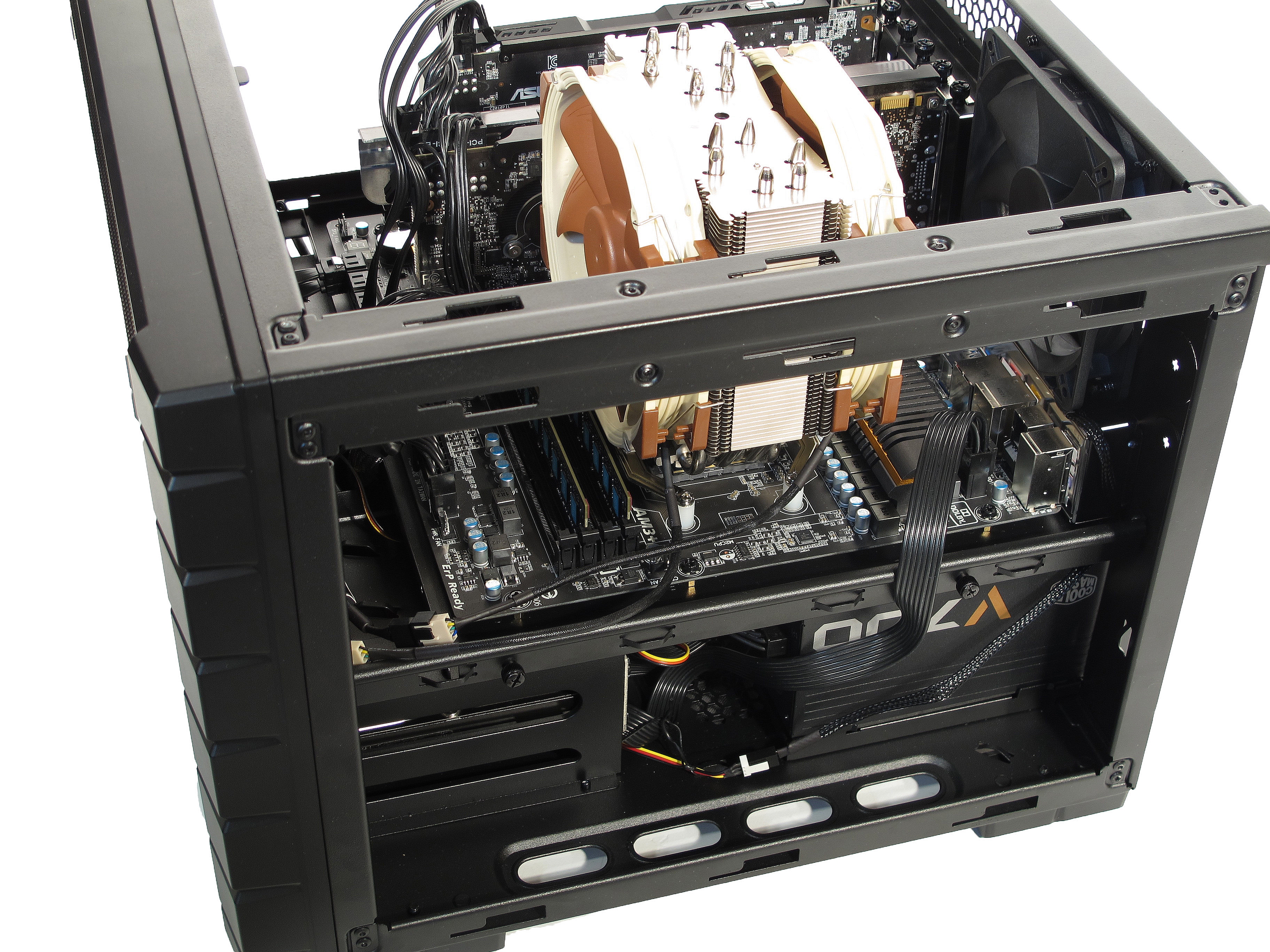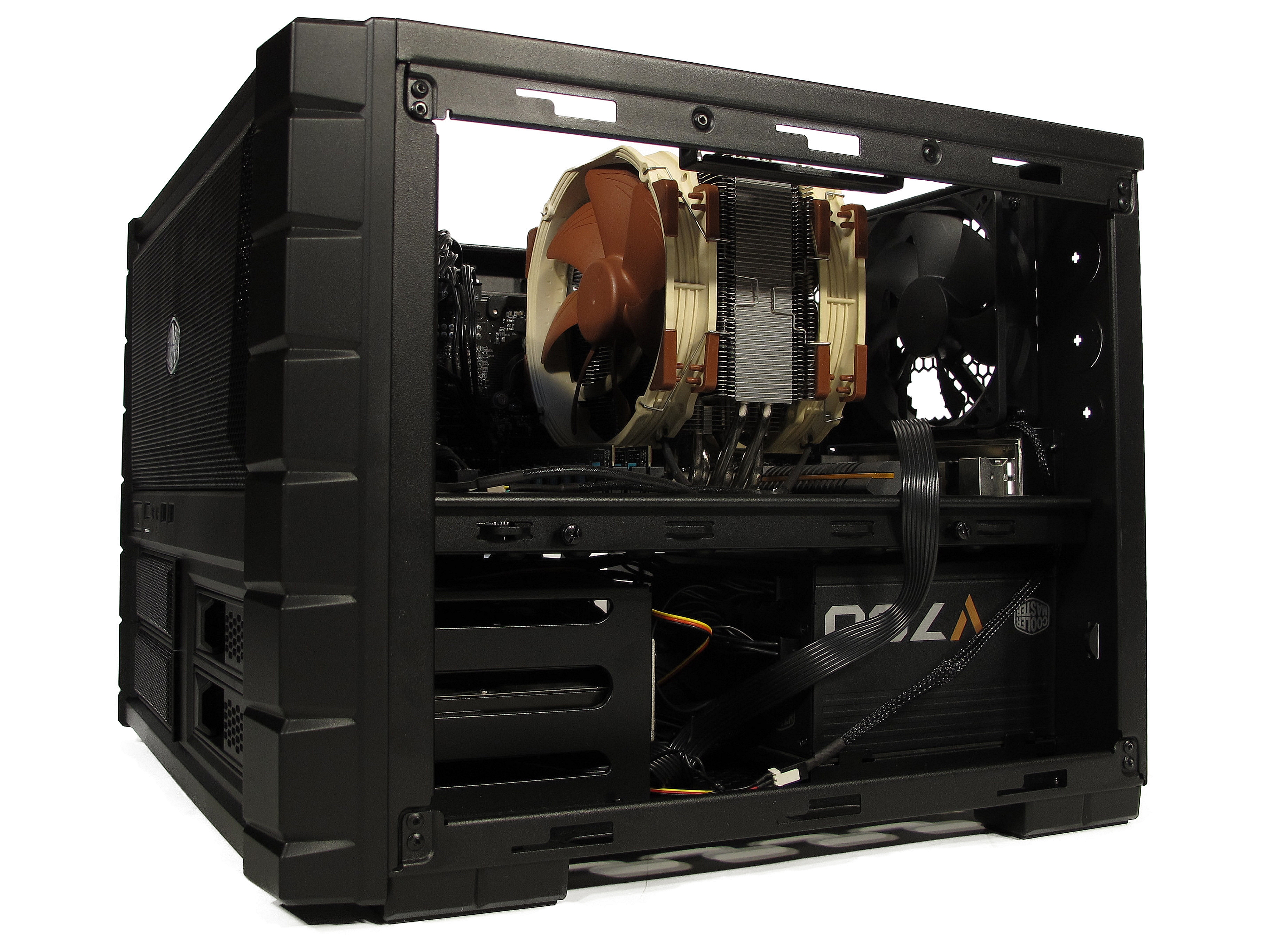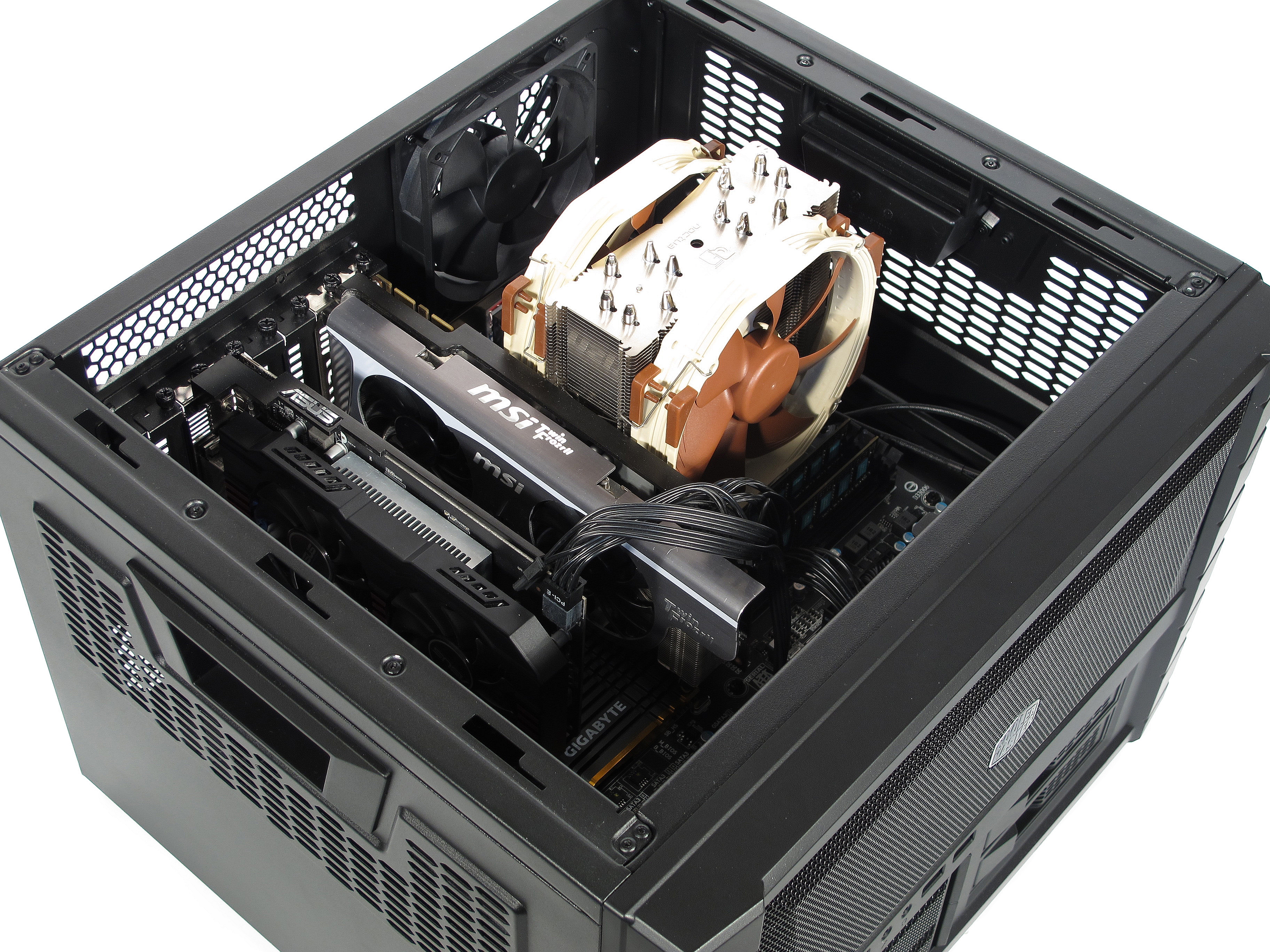Cooler Master's HAF XB: Give Your LAN Party Box Breathing Room
Cooler Master presented the newest member of its HAF family to us months ago in the Tom's Hardware office. Its HAF XB is a unique hybrid between a desktop case and a bench table, with two levels for different components. Today, we're reviewing it.
Benchmark System And Conditions
The Cooler Master HAF XB can be used in a variety of ways. So, how should we benchmark and judge it? We decided to go with the case’s primary function, as stated by Cooler Master on its box, which advertises the chassis as a LAN box. We have no problem expounding on this and calling it a high-end LAN box. Two recessed handles on the sides make Cooler Master's HAF XB the most accommodating case we've seen that retains this level of mobility. Of course, as we already mentioned, you can use it for bench testing or extreme cooling exhibition if you pop the top and sides off. The flexibility to stack several HAF XBs on top of each other might also help explain why we've seen so many at trade shows, too.
We decided to test with an overclocked AMD FX-8350 and a Noctua NH-U14S CPU cooler. The Noctua unit is a bit taller than most competing tower-style heat sinks, but it doesn't obstruct our motherboard's memory slots and does deliver good thermal performance, particularly with the second fan we installed. We also made the decision to use two graphics cards: a power-hungry Nvidia GeForce GTX 470 and a somewhat more modest GTX 650 Ti, which is exclusively used for PhysX.
Gigabyte's 990FXA-UD7 motherboard offers two PCIe x16 slots that are far enough apart from each other to make it ideal for this setup. The Cooler Master V700 is a modular and efficient power supply able to handle the 450 to 500 W we knew we'd need for this system.
| Power-Hungry LAN Party Benchmark System | |
|---|---|
| Processor | AMD FX-8350 (Vishera), Overclocked to 4.4 GHz, +0.075 V, LLC=Medium |
| Processor Cooler | Noctua NH-U14S with 2x 140 mm Fans (Push/Pull) |
| Motherboard | Gigabyte 990FXA-UD7, Socket AM3+, 990FX North Bridge, SB950 South Bridge |
| Memory | 2 x 4 GB Kingmax Nano Gaming RAM DDR3-2200 CL9 |
| Graphics Card | MSI N470 GTX TwinFrozr II (Graphics); Asus GTX650TI-O-1GD5 (PhysX) |
| Drives | SSD: 60 GB Kingston SSDNow V200+ (System Drive) |
| Hard Drive: Samsung HD322GJ | |
| Power Supply Unit (PSU) | 700 W Cooler Master V700 |
| Operating System | Windows 7 Home Premium |
This system was pushed as close to a full load as possible using Prime95 (Small FTTs) and MSI's Kombustor. The two graphics cards hit 100% and 50% utilization using the KMark benchmark integrated into MSI's software. It doesn't push the most taxing thermals possible, but does more accurately portray everyday performance in a game environment. Temperatures are recorded after 60 minutes in a room heated to 22 degrees Celsius.
All fans run at their maximum RPM for our first round of benchmarking. Then, we slow them down to more acoustically-pleasing levels for a second round. We add a 120 mm Cooler Master fan in the space at the back of the case, which is similar to the company's bundled fans.
Get Tom's Hardware's best news and in-depth reviews, straight to your inbox.
Current page: Benchmark System And Conditions
Prev Page Motherboard And Graphics Card Installation Next Page Results: Temperature And Noise Level At Full Fan RPM-
ohyouknow Absolutely love this case. Only thing I don't like is motherboard removal is a pita if you have a water cooler and want to add drives to the bottom compartments. Nice and clean up top.Reply -
panderaamon i've been using this case for the last 2.5 months. my only problem is that my H100i cant work in 4 fan mod cause my GTX 570 DIICU is 3mm's longer than i calculated. oh well, 3 fan mod is working nice. also whatever you do get the upper case fan aswell. use it as an exhaust. you'll be suprised what a difference it makes.Reply -
midnightgun The only change I would like made to this case is the ability to mount rads to the top where the 200mm face spot is. I am really interested in this case for my build early next year. Will you also be reviewing the Corsair Carbide Air 540?Reply -
Vlad Razvan I fell in love with the HAF XB first time I saw it. Have been using one for three months now - lots of space, extremely well ventilated, easy to work with, and a great looker too.Reply
Initially I wanted to go for an expensive 250$ case so my crossfire configuration could fit and have enough ventilation, but then I saw this thing for 125$, bought it and we have been happy ever since.
PROTIP - buy the quietest 120 and 140mm fans you can find or get a fan controller. If you keep the stock frontal fans, you're gonna have a noisy time. -
Vlad Razvan Reply11393992 said:bitfenix prodigy > HAF XB
Review the prodigy.
Good review, though.
For a lanparty, yes, the prodigy es better because it's smaller. As a high-end PC enclosure / testbench - HAF XB is way better. My sister used to keep a pair of GTX 480s in SLi in her HAF XB - it's one of the few cases with good enough ventilation for such hot hardware. -
cscott_it Kai,Reply
Given your experience with this case (and any previous case testing), do you think the HAF XB would cool well with better fans? You wouldn't happen to have the time and a couple of decent Noctua or Thermaltake (the models with the fluid bearing) to test with, would you?
Also, any thoughts on the stock fans rated CFM vs. actual amount of heat dispersed and any impressions with them? My experience with Coolermaster's case fans has been unfavorable over the years. -
dgingeri I absolutely love my HAF XB. I don't use the internal 2.5" drive bays, though. I used a Vantec 5.25" to 4X2.5" hot swap drive bay adapter, for a total of 6 hotswap drive bays. I have 4 SSDs installed, with no mechanical storage. I use a HAF 932 for my storage server, keeping my personal data stored elsewhere so it can be independently virus scanned and backed up. This way I can take my main system places without risking my personal data. I mess around with the insides of my main system enough that this saves me a ton of frustration. It's just awesome.Reply
For the guy who suggested the Bitfenix Prodigy as an alternative to this: what are you, crazy? That thing is a mini-ITX case. It could never pull the duty of this case. It's worthless to any of my needs. Go play with your toys and leave the big boys to talk here.


